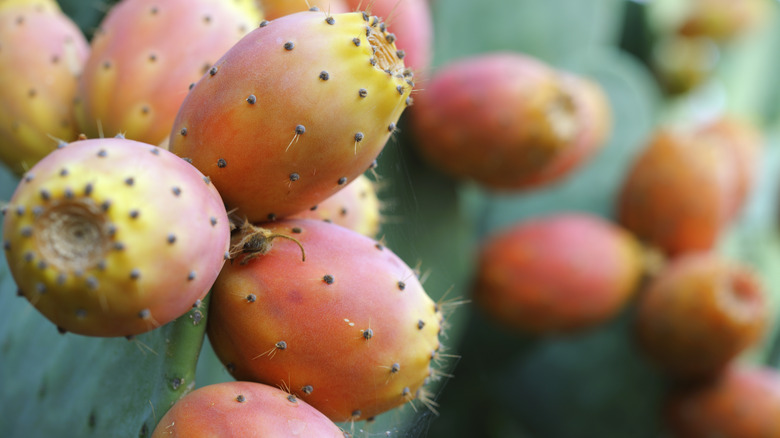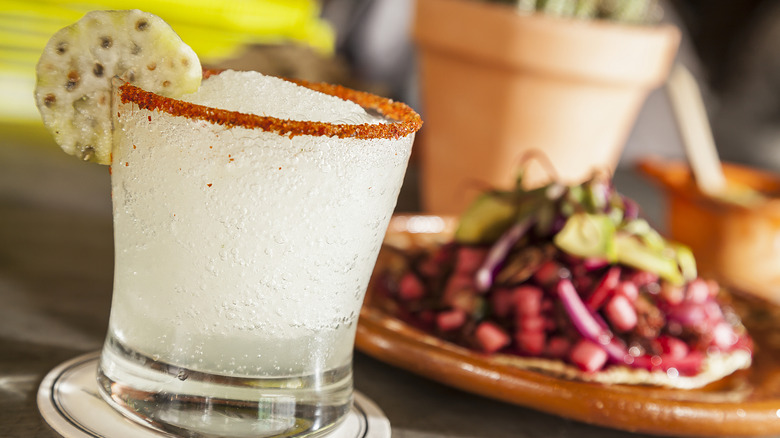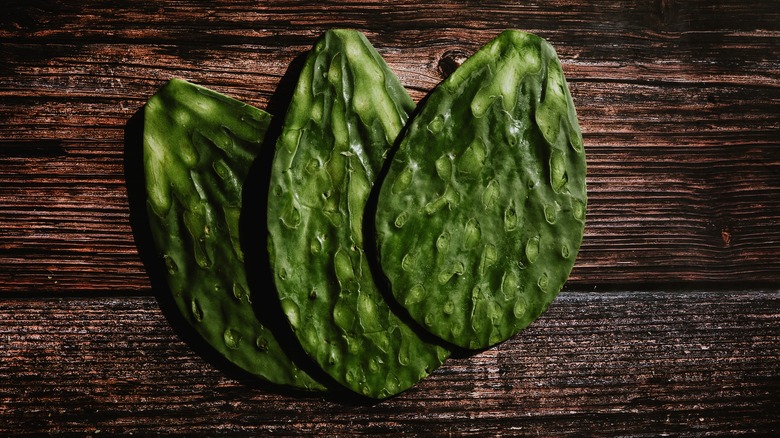What Is The Actual Flavor Of Prickly Pear?
It is an unfortunate myth that a cactus can save someone's life in the desert. The supposed water stored inside would be rather toxic for human consumption, so the idea of tapping a saguaro for hydration is best left in Western movies and Looney Tunes cartoons. However, there is one exception: the prickly pear cactus. Recognizable for their flat, paddle-shaped leaves with bulbous fruits sprouting from their tops, these cacti may not be the best source of water, but they are an excellent source of food.
Prickly pear fruit — which is called "tuna" in Spanish — comes in several different colors: red, yellow, orange, and green. The color references their skin, and the flesh will often, but not always, match, ranging anywhere between purple, red, yellow, green, and white, among others. The flavors of these different fruits can vary, but on a whole the prickly pear tastes like a mix of watermelon with the tartness of a strawberry or raspberry. It also has the texture of a pineapple. There are a lot of seeds inside, which can easily be swallowed or removed before eating.
It's important to note that the prickly pear lives up to its name. The skin is covered in tiny thorns called glochids, which makes harvesting and peeling them a bit like solving an escape room. Use tongs and gloves when picking them from the plant, and it's common to use some kind of torch or grill lighter to burn off the glochids before peeling.
Prickly pear fruit can be used in a variety of ways
It is perfectly acceptable to eat a prickly pear raw and enjoy it, but the fruit has found its way into a lot of different foods. Even though they are perfectly edible, the seeds inside cannot be chewed, which may put off some people. It is therefore very common to juice prickly pears, extracting the liquid and leaving the seeds behind. The juice can be enjoyed by itself, used as an addition to lemonade or cocktails, or turned into a syrup or jelly.
Prickly pear also makes for an interesting glaze for pork, ham, and lamb. When reduced, the sweetness really comes forward, and it works as a delightful replacement for a blood orange and honey-glazed ham or a chai-brined pork chop with apple chutney. Thanks to its bright color, there is also an aesthetic element to the fruit. Using the pink puree or juice in a cake or as a component of icing creates a striking dessert that also tastes great.
The pads of the prickly pear cactus are also edible
The prickly pear fruit isn't the only part of the cactus that's edible. The large paddles, which are called nopales in Mexico, are also extremely popular and are often sold raw on the street — thorns removed, of course. The nopales are crisp like asparagus and have a slightly slimy texture thanks to the juices that are produced inside.
Cooked nopales are either boiled or grilled and are often jarred or canned for commercial use. Perhaps the most popular use for them is in salads — chopped nopales, tomatoes, onions, and cilantro, dressed with lime juice and drizzled with queso fresco. Another common use is huevos con nopales, a breakfast staple of scrambled eggs, nopales, and onions. They're also used as accoutrement for carne dishes, tacos, and salsas. The prickly pear and the nopal both serve important roles in traditional Mexican cuisine and they are well worth searching out.



